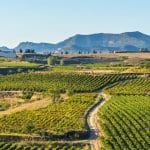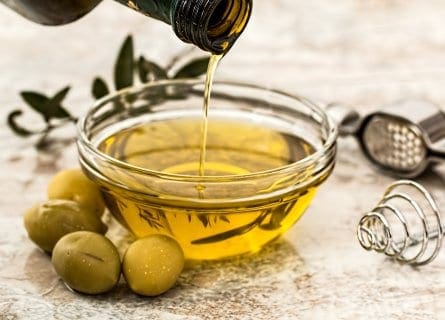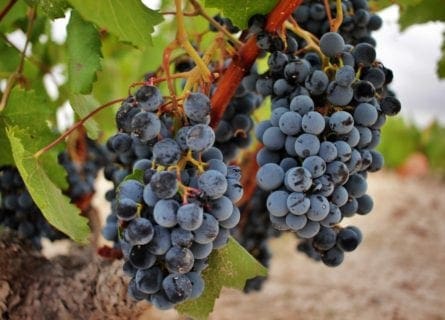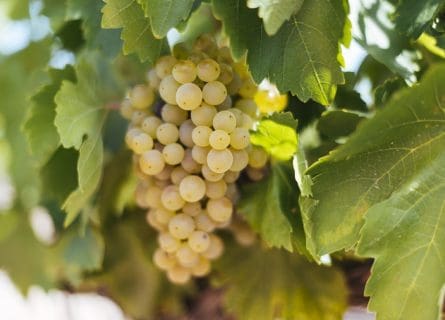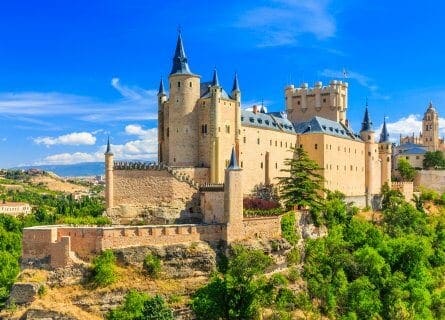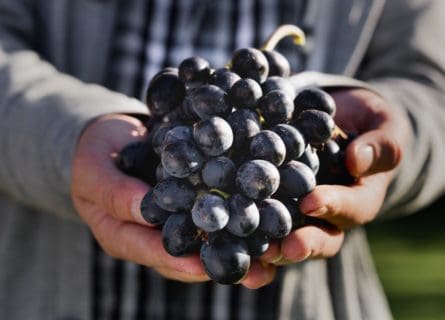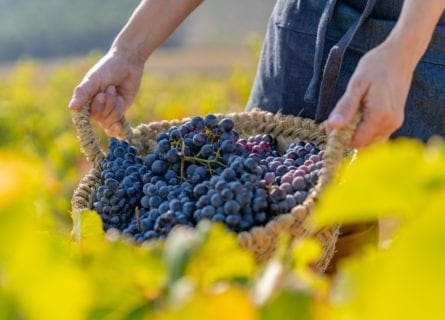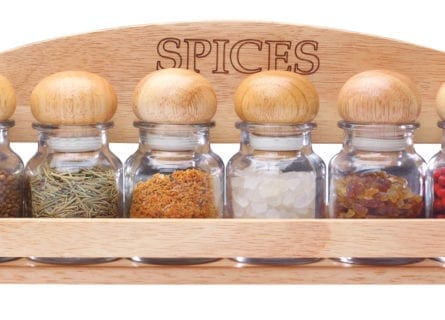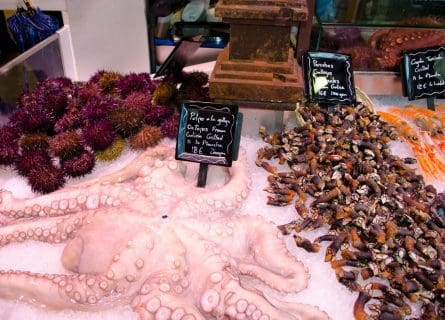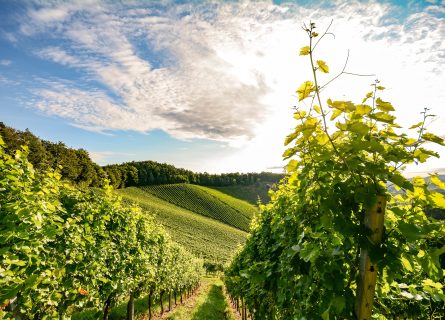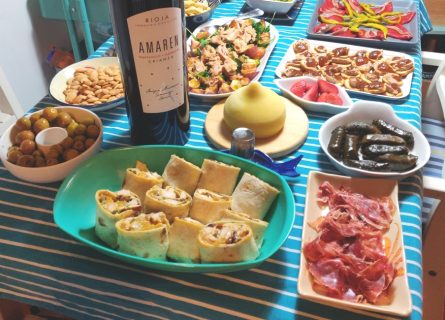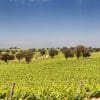
La Mancha Wine Regions Guide
La Mancha: From Arid Plains to Wine Oasis, Unveiling a Premium Revolution!
EXPLORE ALL OUR GUIDES: SPANISH WINE REGIONS
Last updated: August 15, 2024
Introduction
The barren, arid plains of Castilla-La Mancha hold a secret. But it’s not what you might think: there is a longstanding tradition of producing wine here, despite the lack of rainfall. Indeed, La Mancha is Spain’s largest wine-producing area; in fact, it is the largest continuous wine-producing area in the world, with over 450,000 hectares under vine. Moreover, the key appellation (La Mancha DO) accounts for almost half of all vines grown in Spain and produces half of all Spanish wines; the local industry historically focused on bulk production and gigantic volumes sold by discounters worldwide.
However, an emerging generation grew tired of this paradigm in the early 21st century. With fierce competition from the New World and a shrinking global market for cheap dross, progressive wine estates shifted their focus to premium labels. Investing in better viticulture and sophisticated winemaking equipment, they engineered a quality revolution in the former stomping ground of El Cid. Today there are some inspiring examples of site-specific and terroir-driven wines being made south of Madrid. Thanks to the ingenuity of men like Elías López Montero, La Mancha has been granted a rebirth.
Discover more about Spanish Wine
History
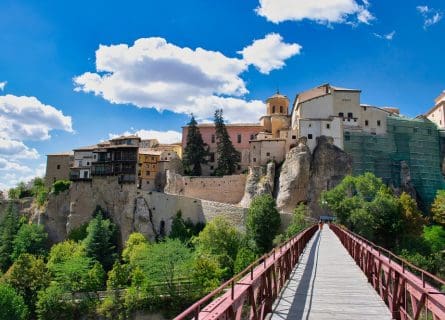
It is a minor miracle that Spain created a thriving (if volume-orientated) industry in this inhospitable and harsh landscape. The name La Mancha derives from the word ‘Manxa,’ a title bestowed by the Moors in the 8th century. It means ‘parched earth’: a most fitting epithet for one of Spain’s least-populated regions. Yet Castilla-La Mancha is rich in historical intrigue and political turmoil – the hero of Don Quijote travels through the region in Miguel Cervantes’ seminal work. Indeed, the solitary windmills and abandoned castles lend La Mancha a timeless air. The Romans were among the first civilizations to settle here, planting vines in central-southern Spain’s meseta (tableland). Their influence lasted for centuries, reaching a peak in the 3rd century AD.
However, the Western Empire collapsed in 476 as the Visigoths seized their chance to end centuries of Roman rule. The Germanic Visigoths eventually settled in the magnificent city of Toledo, dramatically situated atop a gorge overlooking the River Tajo. It was known as the ‘city of three cultures’ in the Middle Ages due to its multicultural inhabitants (Moors, Jews, and Christians made their home in Toledo) and lack of ethnic strife. Nevertheless, the city was taken by the forces of Tariq in the 8th century after the Muslim general led an invasion force into Andalucia in 711. The Kingdom of Al Andalus endured for over six centuries, although the Moors lost territories during the Middle Ages after a Christian rebellion against their rule.
Spain’s Reconquista was a seminal moment in the nation’s history. Much blood was spilled on the fertile terrain of La Mancha as the Catholic monarchs fought successive battles with the Arab and Berber armies; the name Castilla-La Mancha is derived from the immense number of castles (castillos) built during this civil war period. Some of the fortifications were used to defend La Mancha from the Moors, although many castles were used as buffer zones between the kingdoms of Aragon and Castile. Yet these erstwhile rivals became friends after Isabel I of Castile married Fernando II of Aragon. The combined might of their armies laid siege to the last Muslim stronghold of Granada at the end of the 1400s. The victory was theirs; Boabdil relinquished control of the city in 1492. After the Christian reconquest of Spain, interest grew in the intense, fruit-driven wines of La Mancha in the 15th and 16th centuries. Eventually, they were shipped to Madrid to be served in the Spanish Court. After that, a succession of Bourbon monarchs earned great wealth from Spain’s colonization of Central and South America, although much gold was wasted on costly wars with France and England. One by one, Spain lost control of its South America and Asia colonies as its subjects rebelled against the crown’s harsh and despotic rule. Meanwhile, the phylloxera louse devastated vineyards across Spain in the late 1800s, creating widespread poverty in agricultural regions like La Mancha.
The 20th century was no less fraught. The outbreak of the Spanish Civil War in 1936 split communities and families – the subject is still taboo today. It culminated in the disintegration of Spain’s Second Republic and more than 30 years of autocratic rule under the dictator Francisco Franco. Spain’s wine industry entered a real low point during the mid-1900s, as state-run cooperatives squandered the country’s natural resources: exceptional terroirs and unique grape varieties. Much of the industry was dedicated to growing Airén, a high-yielding variety primarily used for distillation. In the 21st century, however, the percentage of red varieties planted has increased significantly.
Geography and terroir
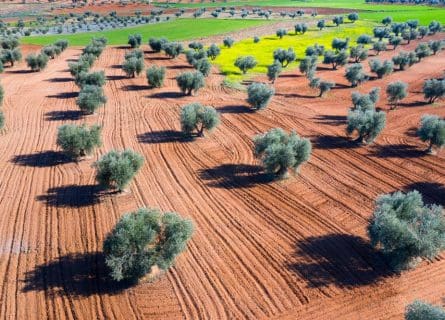
It is easy to see why Cervantes selected La Mancha as the setting for his magnum opus. The landscape is hauntingly beautiful: an undulating plateau covered in olive groves and vines, stretching to a horizon that seems unreachable. Mercifully punctuated by the Guadiana River that flows through the region’s center, the climate is nonetheless one of the most extreme in Spain; winter temperatures can hit 10°F in January, while summer peaks at 113°F in July and August. As a result, drought is a common problem, and irrigation is essential in many of the region’s subzones to allow the vines to thrive. Under these difficult conditions, it is unsurprising that so many growers were content to produce overripe, coarse wines for blending and early consumption. As with many of Spain’s emerging wine regions, things are beginning to change.
Indeed, winegrowers have several natural advantages at their disposal. La Mancha has some very high-quality soils: the reddish-brown calcareous terroir of the meseta is rich in lime and chalk. Moreover, it is a porous soil that helps to retain vital moisture during the summer growing season. In addition, site elevation can rise to greater than 750 meters above sea level in certain DOs (appellations), encouraging diurnal temperature variation. This refers to a significant temperature difference between day and night – vitally important in hot climate regions such as central Spain. It is one of the reasons why the best wines of this expansive region showcase freshness and concentration; lower temperatures at night slow down the vine’s metabolism, helping to preserve acidity in the grapes.
Winemaking and regional classifications
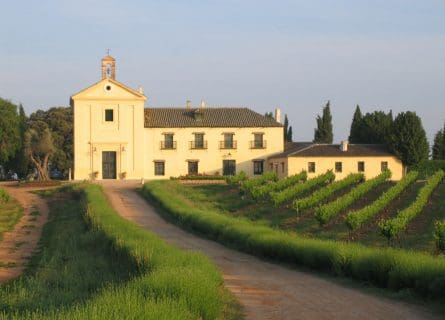
Regarding volume, La Mancha DO is the region’s most important producer, with some 160,000 hectares under vine. Over 22,000 growers and approximately 250 wineries live in this fierce climate, characterized by extreme temperatures in June, July, and August. The soils, meanwhile, are generally homogeneous: sandy clay covers the plateau. The most planted varieties are Airén – the most widely planted grape in the world! – and Grenache. If carefully vinified, the latter can yield wines of real class in this baking hot climate. The investments of recent years are starting to produce results, and well-balanced, oak-aged red wines emanate from this once-drab appellation. Nevertheless, Airén is still vitally important to the local economy, used for distillation and to make grape concentrate.
To the south of the La Mancha DO, we find the Valdepeñas appellation in the province of Ciudad Real. It is located within the La Mancha boundary, yet its quality can be considerably higher. The dry soils encourage low productivity, and the climate ensures that ripeness is rarely an issue! International varieties, including Cabernet Sauvignon, Syrah, Petit Verdot, Chardonnay, and Sauvignon Blanc, are gaining prominence. The local grape Cencibel – Tempranillo to the Riojans – is also prevalent and makes soft, fruity reds in the right hands.
Further east is the sub-region of Almansa, the closest in the area to the Valencia border. The predominant grape varieties are the red Monastrell and Grenache and the little-known white Merseguera. Despite the region’s proximity to the Mediterranean coast, the climate here is resolutely harsh, characterized by the extremes of temperature across Castilla La Mancha. However, exploiting higher altitude sites around 700 meters above sea level has allowed for better-balanced and lighter wines. Some of the old vine Grenache plantings yield wines of real character: intense, spicy, deep reds that are making a name for themselves in markets outside Spain.
Almansa’s neighbor is the larger region of Manchuela, which benefits from the fresh Mediterranean winds that help moderate the similarly harsh climate of the southern Meseta. With significant limestone deposits, this high plateau was brought to international fame by the winemaker Finca Sandoval’s blend of Syrah with Monastrell. A wine that won critical appraisal and now sells out quickly after release. Some of the area’s finest, full-bodied reds are produced from this sub-zone. The poor soils and cooler mesoclimate result in powerful, structured wines from Bobal, Tempranillo, Cabernet Sauvignon, Grenache, and even Merlot!
Due west of Manchuela is the Ribera del Jucar DO, named after the river that runs through the sub-region. It is one of the youngest appellations in Spain, granted DO status in 2003. The vineyards (over 9000 hectares) lie on a plateau that enjoys less extreme temperatures than some of its neighbors, with summer temperatures averaging 77°F. Only red varieties are planted here, with Tempranillo, Grenache, Syrah, and Bobal being the most common; a good hunting ground for lighter reds of real substance, often at very reasonable prices!
The DOs of Mentrida and Mondejar are between here and Madrid and the single-vineyard appellation – Dominio de Valdepusa. The former two have been ripe for transformation for years, and certainly, in Mentrida, this seems to be finally happening. Mondejar wines are generally thick and slightly rustic – with some exceptions – and are produced from Cencibel, Cabernet Sauvignon, Viura, Malvasia, and Torrontes. In contrast, Mentrida’s wines show real promise: powerful but balanced reds from mainly Tempranillo and old-vine Grenache. The quality has risen considerably over the past decade due to new money and ideas being put to great use. There are also some surprisingly soft Cabernet Sauvignons making a name for themselves.
However, the most innovative vineyards are the Marques de Grinon’s at the first Denominacion de Origen Pago (DO Pago). This designation is reserved for single-estate wines of high quality, and the Dominio de Valdepusa near Toledo has established itself as one of the finest producers in the region. Forty-two hectares are planted with mainly international varieties – including Syrah and Petit Verdot – that give powerful, structured, long-lasting wines. Undeniable proof that this region can indeed produce fine wine!
Facts & Figures
Key wine styles
- Full-bodied red, white, and rosé wines. A small volume of sweet and sparkling wine
Appellation structure
- DOs La Mancha, Valdepeñas, Almansa, Manchuela, Ribera del Jucar, Mentrida and Mondejar
Hectares under vine
- Approximately 160,000 hectares (La Mancha DO)
Average annual production
- Approximately 640,000 hectoliters per annum (La Mancha DO)
Approximate number of wineries
- 250 (La Mancha DO)
The lowdown
Over the past decade, a monumental effort has been made to modernize the vineyards and wine cellars across the wider region. Cooler mesoclimates have been identified, leading to wines of better balance and finesse, and the sheer quality of some of the old bush vine Grenache is finally being harnessed. The best potential for quality reds is to the east of this great expanse nearer the Mediterranean coast, particularly the appellations of Manchuela and Almansa. However, improvements are being seen across the entire region, as winemakers are determined to bury the ‘cheap plonk’ epithet forever.
Yet, while the quality bar has been raised in all corners of La Mancha, one or two standout wines deserve a special mention. Bodegas Verum has caused a real stir in journalist circles, not least due to its bold reinvention of the much-maligned Airén grape. The wine is called Las Tinadas Airén de Pie Franco, made in the harsh environment of the central plain. Ordinarily, there is little to recommend in the torpid and neutral wines that Airén tends to yield in La Mancha, particularly if it is grown specifically for distillation. However, this beautiful white, based on very old bush vines, is a game changer. After Jancis Robinson MW tasted the 2018 vintage, she proclaimed the wine “even better than when I first tasted it in summer 2019. Clean as a whistle. Beautiful texture and just a hint of bite on the end.” Robinson isn’t being hyperbolic: this nuanced expression of the world’s most planted white grape confounds expectations. It has structure, depth, and endless finesse. It will change your perception of Airén in a manner scarcely conceivable in the 20th century.
The single-vineyard Grenache wines are worthy of similar praise. Verum, Ulterior Parcela No 6 Garnacha is one name to remember – based on old vines grown in a special climat (vineyard site) and matured in clay jars (tinajas) for about 12 months. It is a most seductive interpretation of the Garnacha grape: floral, high-toned, and very ethereal. “Completely belies its alcoholic strength. There’s a hint of white chocolate but masses of refreshing acidity. I’m tasting it straight from the fridge and it’s responding well,” observed Robinson MW of the 2017 vintage. She’s spot on.
Bodegas Verum represents the new face and future of winegrowing in Castilla-La Mancha. These vineyards south of Madrid have been making rapid progress in the early years of this century, and today a wide range of quality wine styles exist to rival the best from Spain’s varied wine regions. And although the country’s gourmets may still prefer the established pedigree of wines from Rioja, Priorat, and Ribera Del Duero, there is no longer any excuse for ignoring the diverse and often stylish wines from this up-and-coming region. Dip your toes into the vineyards of Don Quijote’s old stomping ground, and prepare to be amazed.
-
 Discover the Essence of Méntrida: Unveiling Exceptional Wines, Vineyards, and Traditions. Your Ultimate Guide. Read more
Discover the Essence of Méntrida: Unveiling Exceptional Wines, Vineyards, and Traditions. Your Ultimate Guide. Read more
Key Grape Varietals
-
Bobal
The Bobal grape is a hidden gem of Spanish viticulture. With a history rooted in Valencia, Bobal showcases a vibrant array of flavors and aromas, including ripe berries, plums, and subtle spice. Its robust structure, balanced acidity, and well-integrated tannins make it a delight for wine enthusiasts. Bobal's sustainability and resilience contribute to its rising acclaim thanks to its thick skin.
-
Cencibel (Tempranillo)
Discover Tempranillo: Spain's iconic red grape. From Ribera del Duero to Toro, it yields concentrated wines. Explore its synonyms and unleash its prowess.
Find out more -
Cabernet Sauvignon
Discover the irresistible allure of Cabernet Sauvignon—a worldwide favorite with robust, dark-bodied flavor. Unleash your wine journey today!
Find out more -
Garnacha
Garnacha: Spain's Red Gem. Akin to Pinot Noir, it bridges terroir and winemaking, crafting captivating expressions.
Find out more -
Malbec
Delve into Malbec, a dark, small grape native to France, cherished for its thick skin and exceptional flavors. 🍇🍷
Find out more -
Merlot
Merlot is the most cultivated grape in Bordeaux and closely related to Cabernet Franc
Find out more -
Mencia
Unearth Mencía: Spain's captivating red gem. Original and alluring, it emerges from the shadows, captivating wine enthusiasts worldwide.
Find out more -
Monastrell
Unveiling Spain's Hidden Gold: Monastrell Wine - Explore the Richness and Allure of this Exceptional Varietal
Find out more -
Petit Verdot
Petit Verdot is a full-bodied red wine grape varietal used in classic Bordeaux blends and originates in southwestern France
Find out more -
Pinot Noir
Pinot noir is a light-bodied red wine varietal closely related to the Vitis vinifera grape and produces the most sought-after red wines in the world.
Find out more -
Syrah
Syrah is dark-skinned and perhaps the most underrated of the 'noble' red grape varieties.
Find out more -
Airén
Airen is a white wine grape widely cultivated in Spain's La Mancha region, known for its ability to thrive in hot and dry climates and produce light-bodied, crisp wines with fresh and fruity flavors.
-
Chardonnay
Chardonnay is a green-skinned grape varietal native to the Burgundy wine region in France and one of the most popular varieties worldwide.
Find out more -
Gewürztraminer
Explore Gewurztraminer, a highly aromatic white grape from Alsace, France. Savor its unique character and allure in every sip
Find out more -
Macabeo (Viura)
Discover Viura: Rioja's Prominent White Grape & Catalonia's Macabeo. Explore its versatility in exquisite wines. A must-read for wine enthusiasts.
Find out more -
Sauvignon Blanc
The sauvignon blanc grape varietal, originally from the Bordeaux region of France, is now one of the world's most loved white varieties.
Find out more -
Parellada
Unveil the allure of Parellada grape: a Spanish gem crafting elegant sparkling & white wines. Explore its unique qualities & flavor profile.
Find out more -
Riesling
Discover Riesling's charm, a white grape from Germany's Rhine region, cherished in Alsace, France. Unveil its secrets and delights
Find out more -
Torrontes
Discover Torrontés grape: Captivating aromas, unique flavors. Argentina's shining star in wine production is also cultivated in Galicia, Spain. Floral, citrus, and herbal notes create a refreshing, medium-bodied white wine. Perfect with global cuisines. A sensory journey awaits.
-
Verdejo
Unveiling Verdejo: Spain's Rueda Wine Region's Prized White Grape. Explore the Crispness and Lightness of this Dry White Varietal.
Find out more -
Viognier
Viognier comes from the northern Rhône valley AOC of Condrieu and is where its most famous white wines are produced.
Find out more
La Mancha gastronomy
As a rule, chefs and restaurateurs in Spain’s meseta don’t stand on ceremony. Indeed, avant-garde experimentation and molecular gastronomy have yet to take off in Castilla-La Mancha; residents are highly suspicious of faddy flavors and over-conceptualized cooking. Instead, you’ll be rewarded with generous portions of hearty cuisine: milk-fed lamb, rich casseroles, game, and the famous Manchego cheese. And the tapas, of course, are to die for.
Nearby Charming Towns and Cities
-
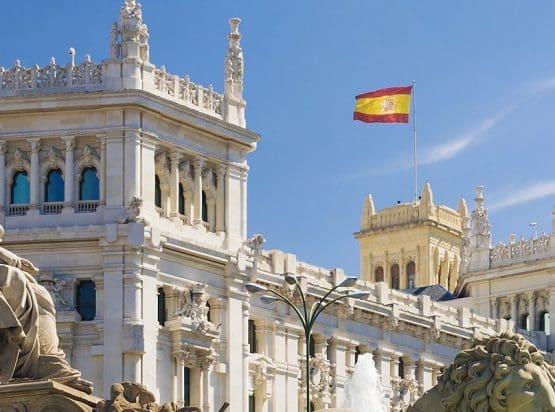
Immerse yourself in Madrid's vibrant flavors and uncover hidden culinary gems with our expert insider guides. Plan an unforgettable trip today!
Read more
-
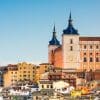
Immerse yourself in Toledo's vibrant flavors and uncover hidden culinary gems with our expert insider guides. Plan an unforgettable trip today!
Read more

Immerse yourself in Madrid's vibrant flavors and uncover hidden culinary gems with our expert insider guides. Plan an unforgettable trip today!
Read more
Immerse yourself in Toledo's vibrant flavors and uncover hidden culinary gems with our expert insider guides. Plan an unforgettable trip today!
Read moreFurther Reading: Discover More Related Blog Content
More information
If you would like us to customize an exclusive luxury tour, contact us and let us know your travel plans. We offer luxury food and wine tours for private groups of a mininium two guests. In addition, all of our private, chauffeured tours are available year-round upon request.

